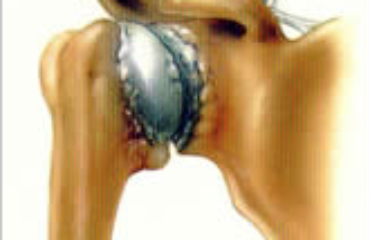What Is Shoulder Instability?
Shoulder instability occurs when the joint surrounding the shoulder does not work as it should. The shoulder is structured in a way that the ball is meant to stay within the socket so as to provide it with its great range of motion. The bulk of shoulder stability comes from the muscles around the shoulder known as the rotator cuff along with soft tissue structures of cartilage known as the labrum.
However, the joint can sometimes become loose and slide out of place leading to a condition known as shoulder subluxation. This may occur from a trauma such as a direct fall on the shoulder, or a repetitive sports activity that leads to a tear of the labrum. Shoulder dislocation could also occur and this happens when the joint moves completely out of its socket. These two scenarios are attributed to shoulder instability and the conditions can be very uncomfortable for the patient.
There are two types of shoulder instability. One is termed multi-directional instablity and is a result of loose ligaments and structures that normally act as the best shoulder stabilizers. The second type is instability due to trauma. A fall can cause the shoulder to dislocate and soft tissue to tear and a fracture to occur.
Treatment Options for Shoulder Instability
Medication
The first course of action your Phoenix orthopedic doctor will take is to try and control the inflammation and pain. Anti-inflammatory medications such as ibuprofen and aspirin can be used. Both over-the-counter and prescription drugs are used and it’s always best to follow your physicians advice on the medications that will best treat your condition. Narcotics are only advisable for short term pain control.
Cortisone Injections
Cortisone injections may also be used when pain relieving medications have not produced desired results. Cortisone injections are not meant to fix the instability, they may offer pain relief so that the individual may participate in physical therapy. The injection relief may persist for months at a time.
Physical Therapy
When the pain is controlled, the shoulder surgeon in Phoenix will recommend strengthening exercises and these are administered to encourage and improve motion within the affected shoulder. Exercise sessions are overseen by trained and certified physical therapists.
The reason why a trained physical therapist is used is because the trainer needs to be able to facilitate a rehabilitative program that will not put the patient at risk of further dislocation or injury. Special shoulder slings may be worn by the patient to protect the shoulder and avoid strain. Those with multi-directional instability are much more likely to have a satisfactory result from PT than those with traumatic instability. The reason is when MDI is present, the tissues are more susceptible to respond with strengthening as opposed to acutely damaged ligaments and labrum that may prevent healing.
Surgery
Sometimes, physical therapy and medications don’t do the job and the orthopedic doctor has no option other than surgery. In order to resume high level athletics, shoulder surgery may end up being the best option. In addition, for those with traumatic instability, the risk of recurrent dislocation is so high that stabilization with surgery is often the best course of action.
 There are two surgical techniques that could be used and these depend on the extremity of the condition. Minimally invasive surgery could be done and this involves the use of an arthroscope which is used to evaluate the shoulder’s interior. Open surgery is the other surgical option and this is done when the patient is suffering from severe instability. With both surgeries, the structures are repaired, tightened or reattached and this could be done with the use of plain sutures or sutures that have been attached with metal, plastic or certain types of anchors.
There are two surgical techniques that could be used and these depend on the extremity of the condition. Minimally invasive surgery could be done and this involves the use of an arthroscope which is used to evaluate the shoulder’s interior. Open surgery is the other surgical option and this is done when the patient is suffering from severe instability. With both surgeries, the structures are repaired, tightened or reattached and this could be done with the use of plain sutures or sutures that have been attached with metal, plastic or certain types of anchors.
There are various methods of surgical stabilization, some of which involve tightening up the joint capsule to keep the shoulder stable. The treatment will depend on the severity of the shoulder instability and whether it’s MDI or traumatic.



